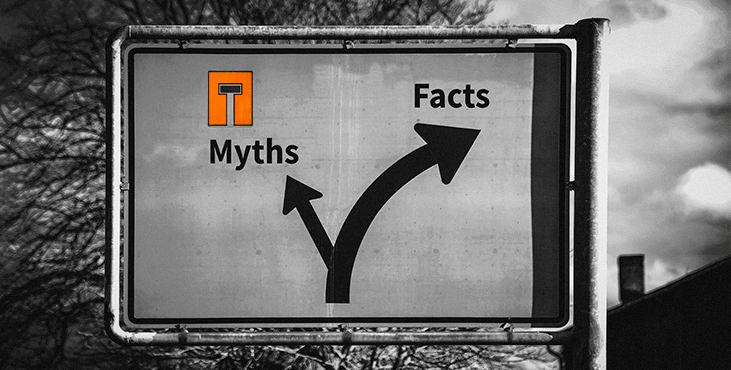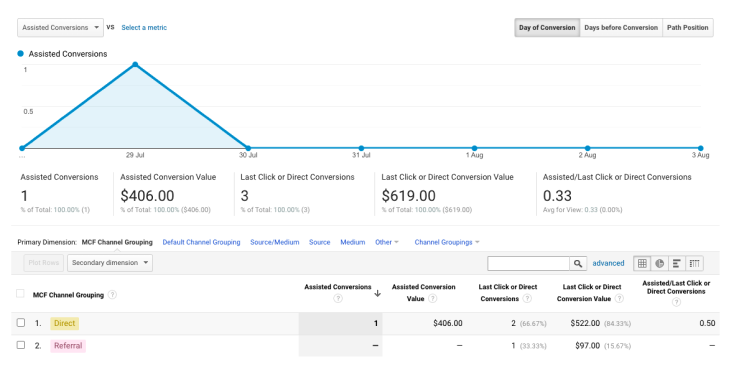
Myths about contextual advertising
In the world of contextual advertising, there are so many myths that have been exaggerated in recent years: contextual advertising does not work, it is expensive and there are many other things. Today, we want to help debunk some of the myths, misconceptions and experiences with contextual advertising that our clients have from time to time.
Contextual advertising does not work
Sometimes contextual advertising may not seem to work. We can cite many examples where the placement of contextual advertising brings excellent results. But yes, the context may not really work or work badly. In most cases, this has obvious reasons and after some improvements, everything will start working.
No one clicks on the ads except my competitors
The first part of this sentence is fundamentally false, and the second one is relative. Google wouldn't be making billions and wouldn't be hiring more people every year if that was true. Google's advertising market is huge and also brings huge profits to advertisers. For a consumer looking for a place to buy a product, advertising is an answer.
When it comes to clicks, this unfortunately happens. But Google is hard to manipulate, they have a very good click fraud tracking system.
SEO is enough
Here are some reviews:
- paid traffic is used only by unreputable companies;
- sites in the top 10 search results do not need PPC.
SEO is a necessary tool, but it is only one of the channels for generating traffic. Moreover, SEO is a long-standing record, and the market moves at the speed of light.
At the same time, the advertising is developing from year to year. This is 3 to 4 positions above organic results, and extensions are used in ads, which also take up space. And that's almost the entire first screen. There's a chance that a user just won't get to your site, even if it's in the top organic positions.
And if your competitor is also targeting your brand name, it's certainly not going to be you, but their advertising.
Contextual advertising is expensive
Of course, in some niches you cannot do without high budgets. For example, the cost per click for our lawyer client in the US can reach $100, but the income of each of his clients is also very high.
Based on our experience, Google Ads can work for small businesses on a small budget with the right targeting. The only thing is that we don't recommend starting with a very small budget and then increasing it as often as clients expect. You need to start with the right budget. Otherwise, the ad may simply not be displayed. And you'll be collecting data for optimization for so long that it's no longer clear what works for you and what doesn't. Because the market is constantly changing.
And that also applies to initially high budgets. Sometimes the niche is narrow or the product is unusual and a high budget is not required at all to cover the existing demand in that region. First you need to inform the public that such a product actually exists.
Google Ads delivers immediate and lasting results
Yes, the result of advertising generally comes faster than SEO, but it is extremely rarely immediate and even more permanent. To test a built strategy, you need data and tests. At the same time, the market is changing, your competitors are not sitting idly by either, demand and seasonality are changing. This is why you need to scan regularly.
You can run once and forget
Similar to this myth are:
- anyone can launch ads;
- experts working on a permanent basis are not required.
If an entrepreneur has free time and knows some marketing nuances and is ready to use some paid tools, he can run ads on his own. Many of our clients did this before. But still, the most common issue is "I started, everything worked well, we were earning a lot of money, then something went wrong, help me please".
Advertising campaigns require constant analysis, monitoring, testing and optimization. Smart campaigns are getting smarter and smarter, but they are still a rudimentary tool and require data to work well. It is best to start with manual bid management and then combine these 2 approaches. If you don't entrust this to the professionals, you can spend the budget even in the beginning.
If traffic drops, it's all gone
A drop in traffic is not always a reason to panic. Of course, we have to check the technical side and the prices right away. But if you entrust your advertising account to an expert and your main goal is profit, reducing the number of impressions and clicks may not be justified. One of the most important tasks of ad optimization is filtering out irrelevant queries. Therefore, when analyzing the amount of traffic, pay attention to the increase in the conversion rate.
Not enough sales, are you really a Google Ads expert?
When developing a strategy and evaluating results, you should always focus on your goals. First, determine what you want to achieve with your ad campaigns in general and what changes you plan to make specifically to your ad account.
It is important to determine the main goal and understand whether it contradicts the current KPIs, so that in the end it does not turn out that we "want everything at once". For example, you want to increase your ROAS/ROI. And we decided to reach more users, which leads to an increase in costs. At the same time, it is not a fact that attracted users will convert. Simply put, increasing traffic does not equal increasing ROAS/ROI, and you need to understand that.
If the most important thing for you right now is the profitability of your business, pay attention to the growth of ROAS/ROI, that is, the level of return on investment in advertising. Working on revenue/sales growth and profitability requires different tactics and cannot be done at the same time.
Not enough sales and they are expensive
In order to fully assess the effectiveness of advertising, it is necessary to analyze not only direct sales, but also related sales.
If you import conversions from Google Analytics, Google Ads only counts the conversion since the last action. The customer's journey is often long and complex, involving many channels during the purchase. A customer may not have made a purchase by clicking on an ad on Google, but they may have seen an ad before and it influenced their future decision. We've had cases where the revenue from related conversions was 5x the revenue from direct conversions.

You can get data on assisted conversions in the Google Analytics section of the same name or configure the conversion directly through the Google Ads tag.
In addition to assisted conversions, repeat purchases should also be considered. The LTV indicator does not work for all companies, but unfortunately, even if it exists, many do not analyze it.
A notable example would be a store that sells diapers and baby products. The first ad conversion may cost you a lot of money, but if the user liked your product/service and came back, you can earn a long time from that click. In terms of future sales, the conversion cost becomes very low.
With low profitability, it is also important to increase the average check. This will help in selling related products and bulk discounts.
Some of my goods (services) are not sold at all - it is necessary to increase publicity for them
Here, as elsewhere, the Pareto principle works. You must advertise what is on sale. Assuming you've already checked everything. With a large assortment and a limited budget, you can use the sales data of specific products in Analytics and display ads on bestsellers. If you already have ads running and all products or services have received enough traffic to evaluate their effectiveness, disable what isn't working. You don't have to bid on an unprofitable product if it gets enough clicks.
In order to sell, I have to be above the competition
Back to our advertising goals. With the exception of very large companies, where sometimes advertising positions are a matter of prestige, for the average businessman the most important thing is immediate profitability. You can also sell from the second page of the issue, but it is much more difficult to maintain profitability in the search for the first place.
Ad sales and budgeting - everything you need to succeed
Advertising is your shop sign, which lights up at the moment when a customer comes in looking for the right product. All subsequent major works take place in the shop itself.
Is it practical?
Is this item in stock?
Is the price of the same quality cheaper than in the previous store?
Is the service well designed enough to keep customers coming back?
You don't need to spend money on this “shop sign” if:
- you have a bulky and slow loading website without a mobile version;
- no USP;
- constant failures in the supply of goods;
- no analytics system;
- your sales team doesn't know how to convert leads.
Google is not for me because I don't sell online
Whatever you advertise offline, in modern times it is often just the first touch for a customer. Seeing your offer for the first time from some other sources, they will probably want to know more about it, as well as read reviews about you. Online presence is essential these days, and if you already have a website, you should be using paid online traffic at least for analyzing user behavior (which is quite difficult offline).
YouTube advertising does not generate sales - turn it off
Google's ad networks are used for different stages of the sales funnel, which means they are evaluated differently. Video ads are a great way to raise brand awareness during the awareness phase.
SEO expert sent you the keys, so you need to add them all to the ad
SEO and contextual advertising use the same keywords if they are high-frequency business queries. Low frequency information keys are rarely used in paid traffic, unlike in SEO.
Tell us what you think
By clicking 'Submit', you agree to Privacy Policy and authorise our staff to contact you. You are liable under the Personal Data Protection Act if you key in false personal data or other people’s personal data.
offers and news
